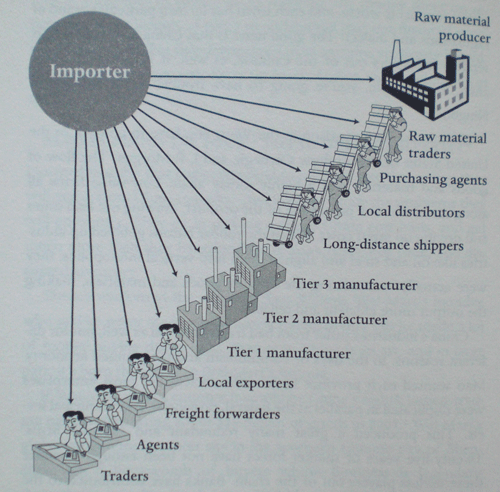I skimmed through All The Tea In China today. It was written by a founder of an American trading company specializing in China importing and exporting. It is aimed at a general public and basically tries to answer the question “where are the opportunities to make money with China?”.
One really interesting part of the book is about the number of participants in a typical supply chain. I wrote some extracts of the book below:
In the days of communism and the planned economy, Mao wanted each province to be self-sufficient. So most enterprises were duplicated in parallel at the federal, provincial, and municipal levels. This produced a great many redundant and subscale firms. Twenty-five years of market forces have not been enough to shake these useless players off the chain. Banks have contributed to the problem by financing dubious businesses and spurring overcapacity.
What does this mean for you in-country? It means that a typical supply chain in China has seventeen to twenty-five players! Each supplier that touches the goods will increase costs, risk, and time. […]
Many factories can perform one function only; they haven’t had the capital to integrate complimentary capabilities. […] A manufacturing program that would require only one supplier in the West often requires multiple suppliers in China.
I liked the supporting graph so much, I copied and reproduced it here:

Why do risks go up in this situation?
- Each factory that provides an input has to deliver it on time and on spec.
- The assembling factory usually does not inspect the quality of its subcontractors.
- If quality or timing issues pop up, individual responsibilities are often hard to establish.
